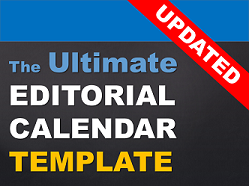 We’ve all written a creative brief. But there is a big difference between a good brief and a great one. Here are seven secrets that every marketer should leverage, but few actually use. Use these simple tips to improve your design brief and agency interactions. The results will be better creative results done faster and ultimately greater ROI.
We’ve all written a creative brief. But there is a big difference between a good brief and a great one. Here are seven secrets that every marketer should leverage, but few actually use. Use these simple tips to improve your design brief and agency interactions. The results will be better creative results done faster and ultimately greater ROI.
1. Don’t tell your agency what to do creatively
Probably one of the biggest traps to fall into is telling your agency or freelancer exactly what to do. Resist the urge no matter how creative you are. You’ve hired them for their creative skills and to produce great work. Let them do it. Unleash creative teams to bring in their experiences and unique insights to develop an exceptional campaign. And frankly, the project won’t be as fun for them if you dictate the creative details you want in your creative brief.
2. Provide high impact proof points
One of the key difference makers in a creative brief is to include some key data points – meaningful facts, research results, milestones, 3rd party confirmed rankings, customer testimonials, anything that your creative team can leverage. These proof points give creative teams something to build on to develop influential messages and avoid blah, blah, blah marketing. From an audience standpoint, these proof points validate any marketing claims and help them affirm their decision to act.
3. Tell stories
Sometimes the “a-ha” moment coming from a creative brief isn’t in the bullet points. Good creative teams can tease out something meaningful or emotionally evocative from anecdotes and real world experiences with your company, product or service. You probably won’t be able to write out the whole story in your creative brief. Just add some reminders in the document and then be the storyteller when reviewing the brief with the team or agency.
4. Don’t use the same creative brief again and again
It is likely that you will work with the same agency or team more than once. Or you are promoting the same product, but just creating a different campaign. To avoid getting diminishing or mediocre results, I highly recommend that you don’t reuse the same design brief over and over again. Refresh the content of your creative brief with each project… even if the target audience and proof points are the same. It signals the creative team to stay engaged and thinking of the next exceptional campaign, because you are engaged too. If you feel the brief isn’t that important to update or don’t put in the effort, you should expect equivalent lackluster results from the project.
5. Define measurable objectives
We all know to make our goals measurable, right? Make sure to include objectives with more than just a generic statement like “increase ROI” or “drive more leads”. Give an actual target number. Better yet, substantiate that measurable objective with any baseline results or analytics you have. For example, let them know that your last three campaigns had an average conversion rate of 7%. That objective is much more actionable.
6. Better targeting through buyer personas
Describing the target audience and what motivates them can be considered the most important element of a design brief. Paint a picture of the types of people who will buy to get the most out that section of the brief. You want your creative team to be able to mentally step in that buyer’s shoes. What is their job? What do they do day-to-day? High-level industry or broad customer segmentation information is useful, but providing your creative team with personal details is where you get great ideas.
7. What drives action?
Building on the buyer persona tip, the next secret is to tap into what will drive the buyer act. Take the persona information a few steps further by 1) describing what motivates the target buyer and 2) identifying what emotion can induce action. What do they do to get a raise or make their life easier? Answer questions like that to uncover motivations and to show examples of what a person actually does, based on that motivation. Then figure out an underlying emotion associated with that action. For example, do they feel something positive like association or comparative advantage or something negative like scarcity or loss aversion?
There is a lot of great information you can provide in a creative brief. Use these secrets to maximize results of your campaigns and projects. Check out the creative brief template that I use. It includes reminders for each these tips. Feel free to download it and use it for your next project.
What’s your secret ingredient to a great creative brief?
